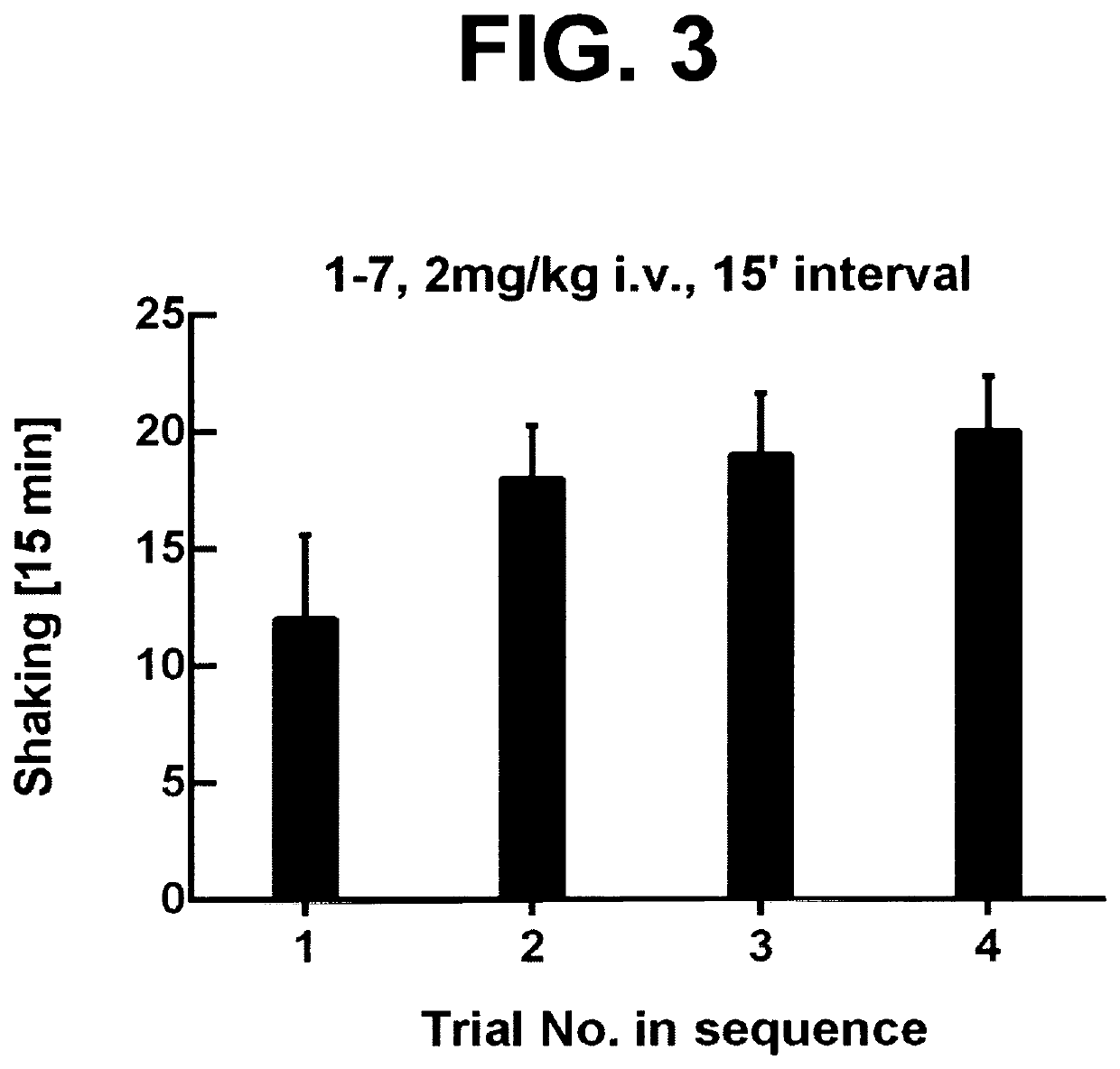Cooling adjunct for medications to treat disorders in the nasal cavity
a technology of cooling adjuncts and medications, which is applied in the field of formulation of therapeutic compounds for the treatment of disorders of the nasal cavity, can solve the problems of nasal discomfort and inflammation, nasal stuffiness and congestion, and the sense of loss of patency, and achieve the effect of increasing patient adherence/complian
- Summary
- Abstract
- Description
- Claims
- Application Information
AI Technical Summary
Benefits of technology
Problems solved by technology
Method used
Image
Examples
case study 1
[0183]A 70-year old male subject had long-standing seasonal allergic rhinitis since he first noticed nasal symptoms on a golf course in spring, 45 years ago. The likely trigger was grass pollen because the allergy manifested itself most often after rainstorms followed by periods of dry weather. Over the years, he learned to control nasal congestion and rhinorrhea with oral antihistamines by taking a daily dose of 10 mg of loratadine, supplemented during the hay fever season by two 60 mg fexofenadine tablets daily, and when necessary 5 mg of chlorpheniramine. He had tried an intranasal steroid spray [Flonase®], but found the delivery method “messy” and leaving objectionable sensations in the nose and mouth which interfered with gustation.
[0184]This season his allergy was heralded by the onset of severe bouts of violent sneezing, about 10 to 15 sneezes in a 15 min period, followed by rhinorrhea and congestion. He volunteered to try the DAPA compounds of this discovery and stopped usin...
case study 2
[0186]A 50-year old male subject is a distinguished scientist at a world-renowned institute of research in physiology. He has a MD and a PhD degree. The subject suffers from perennial rhinitis of many years. He stated that the rhinorrhea is “always there” and seeing specialists and taking standard medications such as intranasal steroids and antihistamines were minimally effective to help control the symptoms. He noted that on average his rhinorrhea can be estimated by the 10 Kleenex tissues he deposits each day into his waste paper basket! He volunteered to try swabs containing DIPA-1-9, 2 mg / mL and was given instructions on how to apply the solution onto the anterior nasal vestibule. He reports that “The results are truly amazing. For the first time in many years, I woke up in the morning without any rhinorrhea.” He noted that he now uses zero or only one or two Kleenex tissues for his nose each day. He remarked on the “strong drying effect on the mucous membranes of the nasal cavi...
case study 3
[0189]A 45-year old female subject was a professional tennis player. She had nasal congestion from the common cold before an important match and asked if she could try the swab. She was given a swab containing 4 mg / mL of 2-6. She said the swab was fully effective in reducing her congestion and she was very pleased that she won her match. Subsequently, she went to Hong Kong to visit her grandfather. It was in February and she noted the air pollution was severe, and going out into the streets gave her the sniffles. She had been given swabs containing DIPA-1-9 2 mg / mL and she said use of these swabs reduced the irritant effects of breathing the polluted air.
[0190]The efficacy of the swabs in controlling the symptoms of nasal stuffiness from the common cold was confirmed in two other subjects. The effects, however, were not as dramatic as with hay fever symptoms. One subject remarked that when “The nose was completely stuffed up, it was difficult to inhale and self-administer the conten...
PUM
| Property | Measurement | Unit |
|---|---|---|
| concentration | aaaaa | aaaaa |
| concentration | aaaaa | aaaaa |
| volume | aaaaa | aaaaa |
Abstract
Description
Claims
Application Information
 Login to View More
Login to View More - R&D
- Intellectual Property
- Life Sciences
- Materials
- Tech Scout
- Unparalleled Data Quality
- Higher Quality Content
- 60% Fewer Hallucinations
Browse by: Latest US Patents, China's latest patents, Technical Efficacy Thesaurus, Application Domain, Technology Topic, Popular Technical Reports.
© 2025 PatSnap. All rights reserved.Legal|Privacy policy|Modern Slavery Act Transparency Statement|Sitemap|About US| Contact US: help@patsnap.com



